ParksandGardens, China
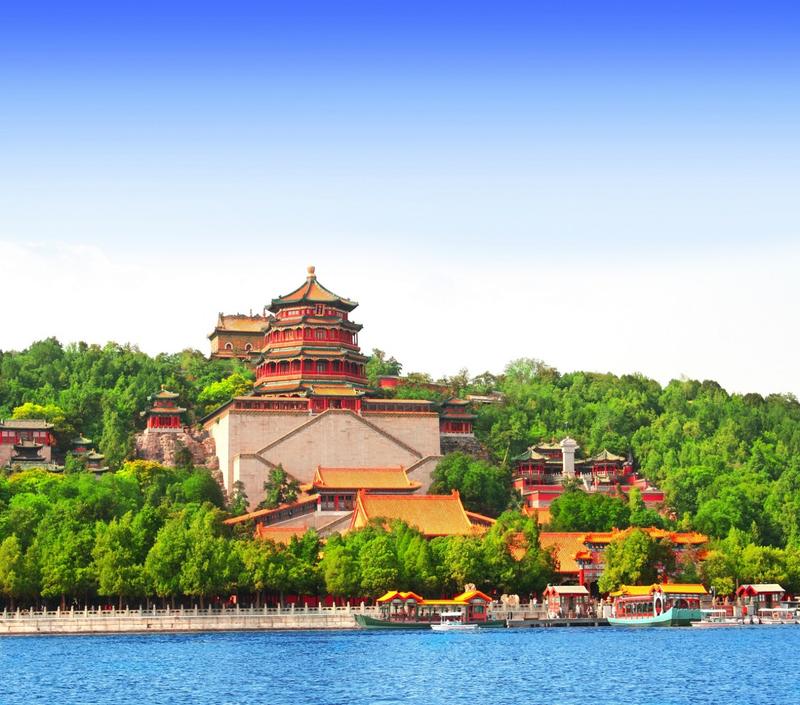
Removed from Unnamed collection
Summer Palace (Yiheyuan) 
The Summer Palace is said to be the most well-preserved imperial gardens and the largest of its kind still in existence in China. There’s so much to see and enjoy that most people prefer to stay there at least half a day. Composed mainly of Longevity Hill and Kunming Lake, it owns over 3,000 man-made ancient structures, including pavilions, towers, bridges, corridors, etc. On the grounds of the Palace you will be able to walk through 'The Long Corridor' which is the longest corridor in the world. https://www.chinahighlights.com/beijing/attraction/summer-palace.htm
Map
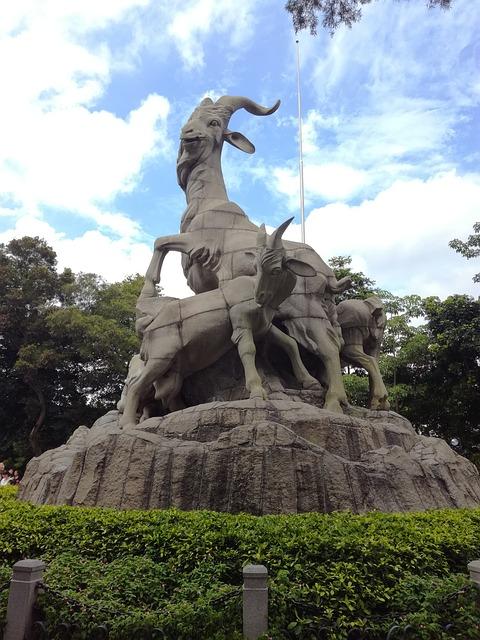
Removed from Unnamed collection
Yuexiu Park 
Yuexiu Park, named after Yuexiu Mountain, built in 1952, is the biggest comprehensive sight-seeing park. https://www.chinahighlights.com/guangzhou/attraction/yuexiu-park.htm
Map

Removed from Unnamed collection
Hangzhou Safari Park 
The Hangzhou Safari Park is a fully-fledged zoo and safari park with quite an array of exotic animals. Lions, Siberian Tigers, and the odd Hippo steal the show, but The Naughty Monkey Cage is good for giggles too: nit-eating Monkeys preening every conceivable part of their bodies will have you in stitches. You can take the train around the safari park or even drive yourself via private car entry. At every stop there are zookeepers, some feeding mulberry bushes to the Camels or apples the Brown Bear, or giving live chickens to the Cheetahs to squabble over. Circus, Bird and Elephant shows can be seen at various times throughout the day. http://www.chinadaily.com.cn/m/hangzhou/e/2010-07/06/content_10072238.htm
Map

Removed from Unnamed collection
Polar Ocean Park 
Hangzhou Polar Ocean Park, 7 km from downtown Hangzhou, is China's largest polar ocean park, covering a total area of 330 mu. http://www.chinadaily.com.cn/m/hangzhou/e/2010-07/06/content_10072238.htm
Map
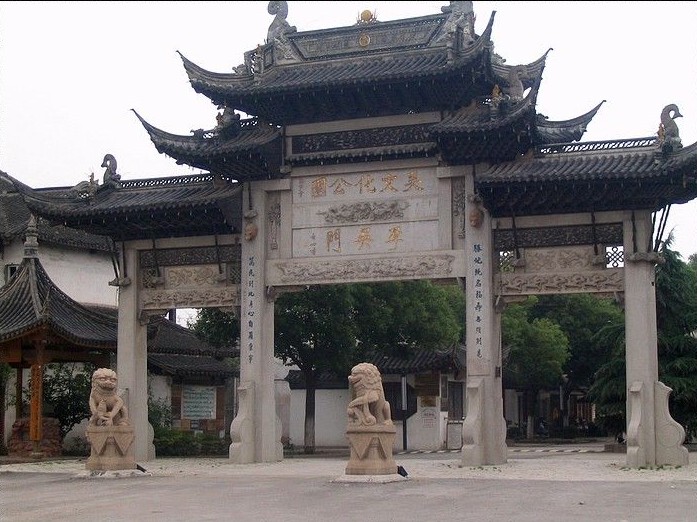
Removed from Unnamed collection
Wu Culture Park 
Wu CulturePark, also known as Wu Culture Exhibition Center, is named Wuxi Folk-custom Village in the tourismindustry.
Wu Culture Parkis the first big culture park invested by farmers in China. Lying on Xigao Mountainin Yanqiao Town of Wuxi, it covers an area of 46.7 hectares, among which 3.7hectares are for ancient architecture. http://en.wuxi.gov.cn/sitePages/channelPages/1300350200330308.html?sourceChannelId=0&did=337483
Map
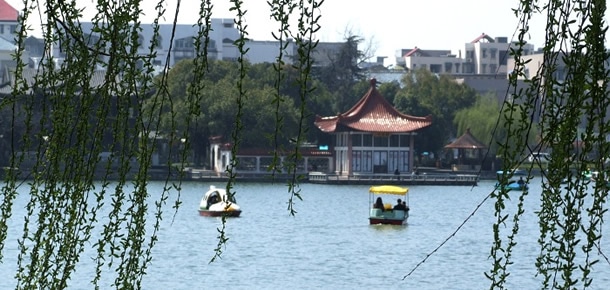
Removed from Unnamed collection
Mirror Lake 
Mirror Lake, formerly called Tao Pond, belonged to Mr. Zhang Xiaoxiang, a patriotic poet in South Song Dynasty. He donated 7 hectares of farmland to make a lake. The water is so clear that it reflects like mirror. That’s why it got its name as “Mirror Lake”. The lake is open to the public, pavilions and galleries are surrounded by willows. http://english.wuhu.gov.cn/Visitors.aspx?pTypeID=11070603
Map
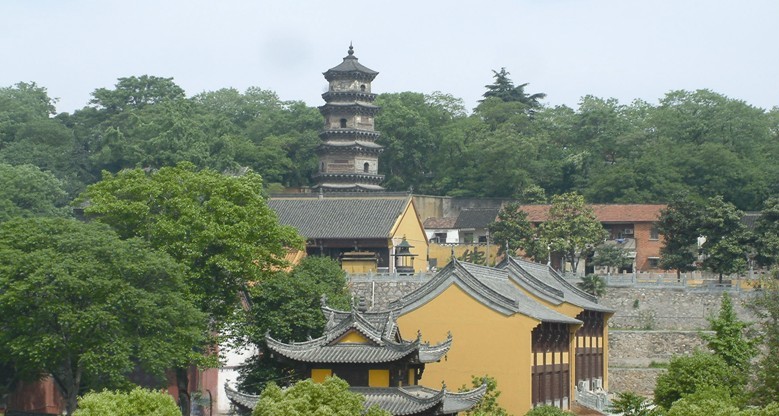
Removed from Unnamed collection
Zhe Pagoda 
Situated in the backyard of Jiuhua Palace in Zheshan Park, Zhe Pagoda can be dated back to Song Dynasty in 1065. It is regarded as the key relics preservation in Anhui province. The Pagoda is surrounded by hills and trees. It is worthwhile taking a one-day trip in the downtown with other attractions like Guangji Temple, Shutian Pavilion, Cuiming Garden, Mr. Liu Xiping’s graveyard, lieutenant General Dai Anlan’s graveyard. http://english.wuhu.gov.cn/Visitors.aspx?pTypeID=11070601
Map

Removed from Unnamed collection
Bailiandong (White Lotus Cave) Park 
Located north of Guancun, Jida, and in the valley of Southeast Banzhang Mt, Bailiandong Park is famous as the home of an ancient monk who lived in seclusion and planted white lotuses everywhere. A relic of the Paleolithic Period, the park was built during the Reign of Emperor Ch’ien-lung (Qianlong) (1735-96) and is the first cave museum in China. It contains a large number of fossils from ancient humans and mammals. The fossils of relics suggest that the White Lotus caveman made clothes and used fire to cook some 50,000 years ago, framing the White Lotus Cave Culture.
With clear streams flowing down to a central lake and the lush green mountain, curiously shaped rocks, caves, pavilions and barbecue site, the park is an ideal venue for Chinese and western anthropologists to do scientific research and for visitors to go on outings on the weekend or exercise at any time. http://subsites.chinadaily.com.cn/zhuhai/2016-04/28/c_51739.htm
Map

Removed from Unnamed collection
Shenzhen Safari Park 
Shenzhen Safari Park is China's first zoo that lets animals live in natural habitats. There are nearly 10,000 wild animals of more than 300 species, most of which are rare and protected species, including eight tigons and ligers. http://english.sz.gov.cn/tis/201608/t20160830_4383184.htm
Map
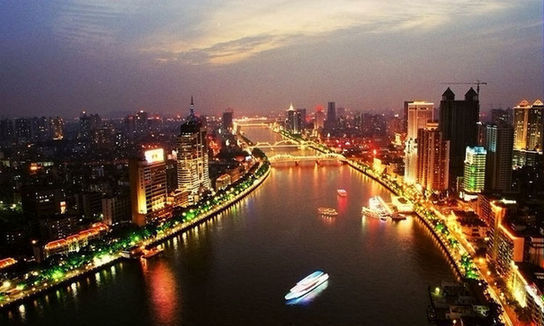
Removed from Unnamed collection
Night tour of the Pearl River 
The Pearl River is the third longest river in China with a length of more than 2,000 kilometers. The river is composed of four separate river systems, which join up in Guangzhou, flow for about 70 kilometers, and then pour into the South China Sea. http://www.china.org.cn/top10/2011-03/14/content_22137978_2.htm
Map
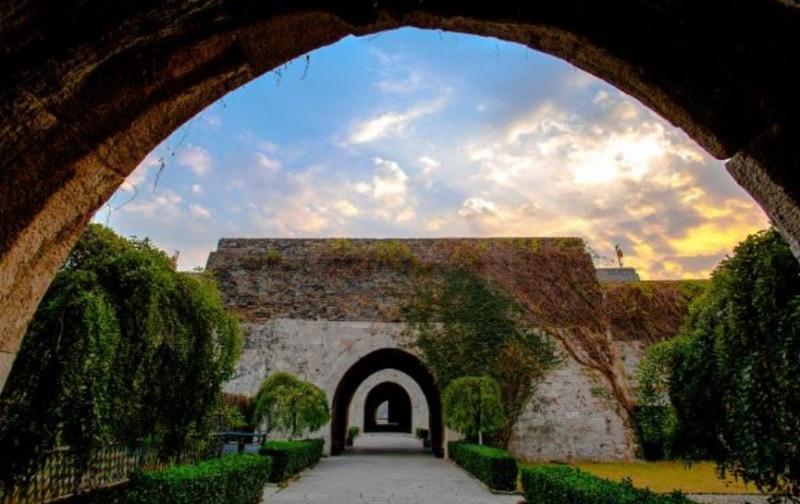
Removed from Unnamed collection
The Ming Great Wall of Nanjing 
Going back to the 14th century this historic landmark is a symbol of Nanjing’s time as the capital of the Ming Dynasty between 1368 and 1421.
Founder of the Ming Dynasty Emperor Zhu Yuanzhang ordered its building to protect Nanjing from invaders.
Purple Mountain, Xuanwu Lake and Qinhuai River provided additional natural defences as the Wall snaked around them. The curved Wall was unusual, as up until then city walls had been built in straight lines. Completed in 1386, Nanjing is one of the few cities to retain its original walls. Making the state-protected Ming Great Wall a national treasure.
The Ming Great Wall was 35 kilometres long. It was considered to be one of the longest city walls in the world. Today about 25 kilometres are still intact with the following six sections being opened to the public:
Zhonghua Men (Treasure Gate) to Shen Ce Men Gate (Peace Gate). It is approximately 6 kilometres long.
Zhong Shan Gate (Zhong Shan Men) to Guanghua East Street (Guang Hua Dong Jie), it is approximately 2 kilometres.
East Water Gate (Dong Shui Guan) to West Water Gate (Xi Shui Guan), it is approximately 6 kilometres.
Qing Ling Mountain (Qing Ling Shan) to Defense Garden (Guo Fang Yuan), it is approximately 1 kilometre.
Ding Huai Gate (Ding Huai Men) to Lion Mountain (Shi Zi Shan), it is approximately 4 kilometres.
Zhong Fu Road (Zhong Fu Lu) to Zhong Yang Gate (Zhong Yang Men), it is approximately 2 kilometres. http://www.cityofnanjing.com/article/the-ming-great-wall-of-nanjing/
Map
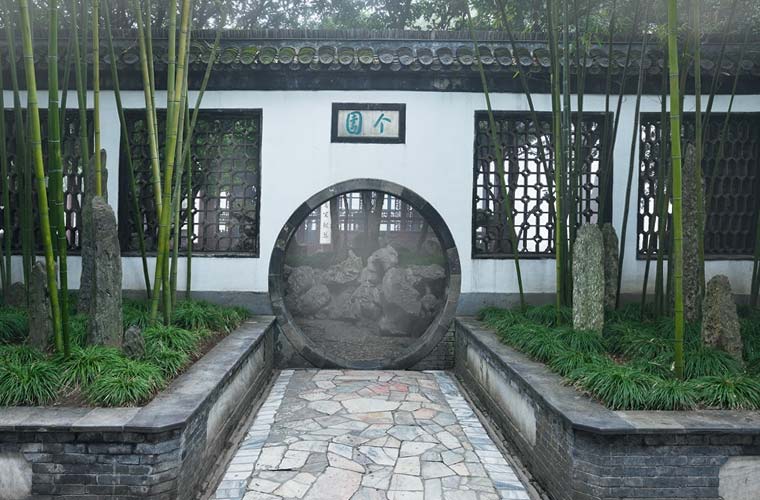
Removed from Unnamed collection
Geyuan Garden (Ge Garden) 
The garden is one of the four most well-known classic Chinese gardens. It is closely laid out and famous for its piled rocks. The garden was originally the home for the Monk Shi Tao, a famous Buddhist Monk and painter in the Qing Dynasty. http://yangzhou.jiangsu.net/attraction/premier.php?name=Geyuan_Garden&city=yangzhou&id=48
Map

Removed from Unnamed collection
Slender West Lake 
As the most famous tourist attraction in Yangzhou, Slender West Lake in the north part of the city covers about 100 hectares.It was named a national key scenic spot in 1988 and a national 5A-level tourist zone in 2010. http://usa.chinadaily.com.cn/travel/2016-10/04/content_26970174.htm
Map
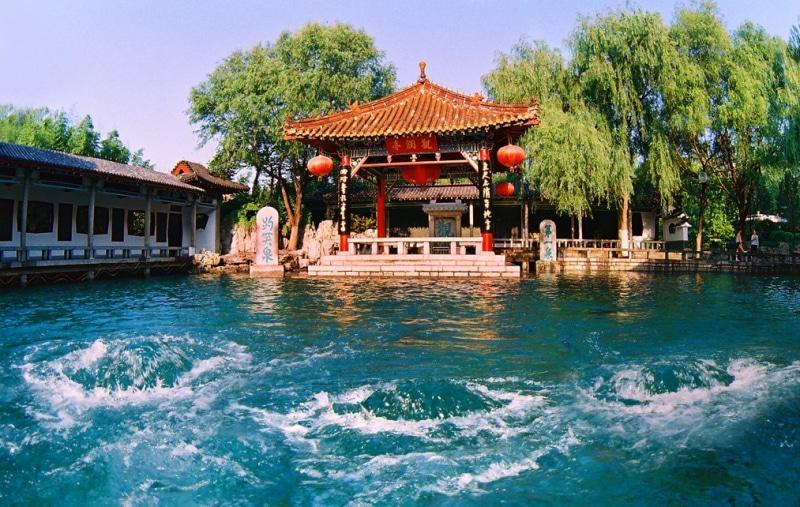
Removed from Unnamed collection
Baotu Spring 
The Baotu Spring is a culturally significant artesian karst spring located in the city of Jinan, Shandong Province, China. It is mentioned in the Spring and Autumn Annals, one of the Five Classics of Chinese literature and was declared the “Number One Spring under the Heaven” by the Qing Dynasty Emperor Qian Long. http://www.chinatours.org/index.php/tag/jinan/
Map
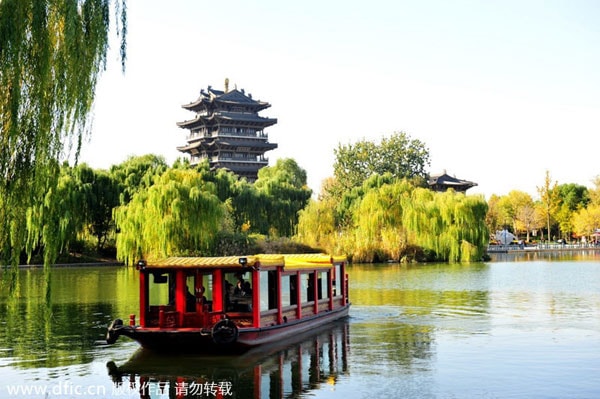
Removed from Unnamed collection
Daming Lake Park 
One of the few springwater lakes in a Chinese city, the lake has been a nationally famous scenic spot since the Tang Dynasty (AD 618-907) for its picturesque view with a ring of lakeside ancient pavilions, residences and temples. http://www.chinadaily.com.cn/travel/2014-02/13/content_17280706.htm
Map
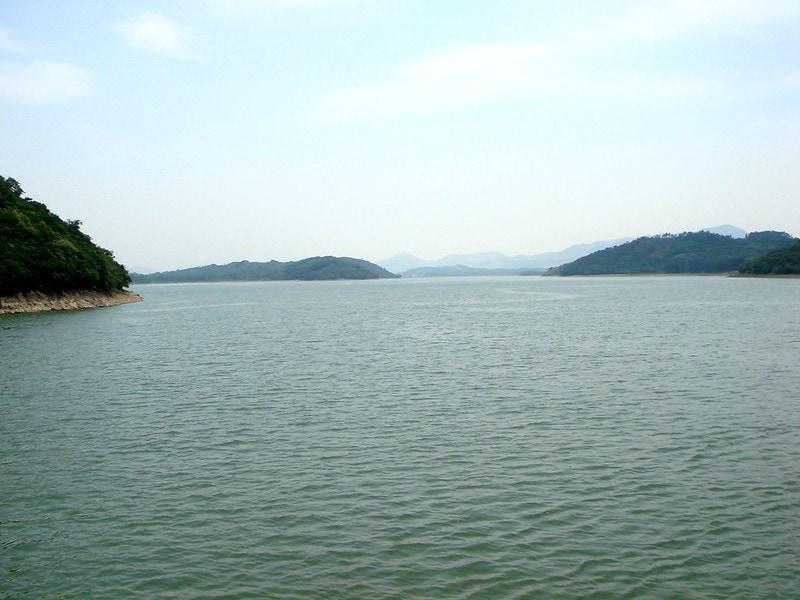
Removed from Unnamed collection
Tianmu Lake 
Tianmu Lake Tourist Resort is ranked among the first batch of National AAAA Scenic Spots, which is on the border among Jiangsu, Anhui and Zhejiang provinces. It consists of two strips of water area, lying on either side of Dongling Mountain. The source of Tianmu Lake connects with Tianmu Mountain and flows for 13.5 kilometers. The lake has an average depth of 10 meters and reaches the deepest at 28 meters. The lake water mainly came from rainwater and mountain streams, which have been purified by the vegetation of surrounding mountains and filtered by the underwater stones before running into the lake; therefore, Tianmu Lake has maintained the purity and mineral composition of natural spring, the water of which reaches National Class B for surface water and is considered as the best water within Jiangsu province.
Tianmu Lake is located about 60 to 200 kilometres away from Shanghai, Nanjing, Hangzhou, Suzhou, Wuxi and Changzhou, reputed as the “Eco-Home and Dreamy Paradise”, the “Southern Pearl and Green Wonderland.” Surrounded by mountains, Tianmu Lake Resort boasts crystal clear water and pleasant climate, with vegetation coverage of 45% or more, which has become a “back garden” and “natural oxygen bar” of the peripheral cities, suitable for visiting in over 300 days a year. http://www.changzhou.gov.cn/ns_news/12134327283521
Map
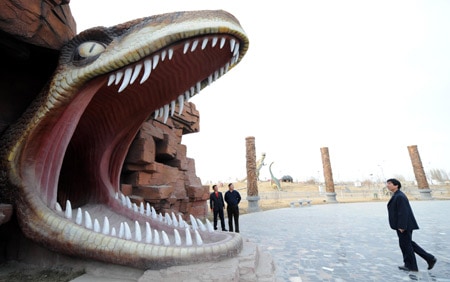
Removed from Unnamed collection
China Dinosaur Park 
China Dinosaur Park is located at the Modern Tourism & Recreation Park in Xinbei district of Changzhou, which was built in 1997 and opened to the public on September 20th, 2000. Also known as"OrientalJurassicPark", China Dinosaur Park covers a total area of over 600 mu, which perfectly combines museum, hi-tech acoustic, optic and electric technology, special video effects and multimedia network, and integrates exhibition, science popularization, entertainment, leisure and participatory performances. http://www.changzhou.gov.cn/ns_news/12134327283521
Map

